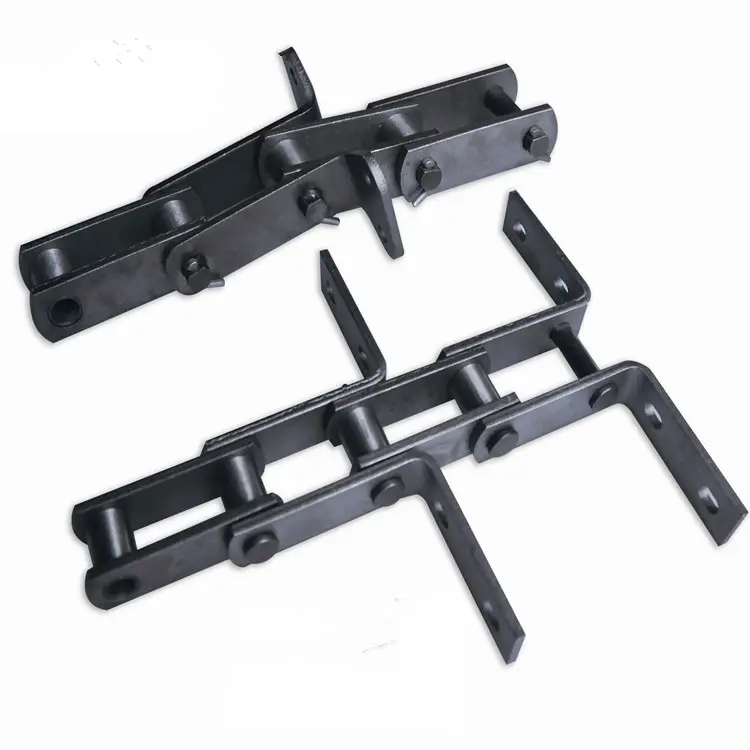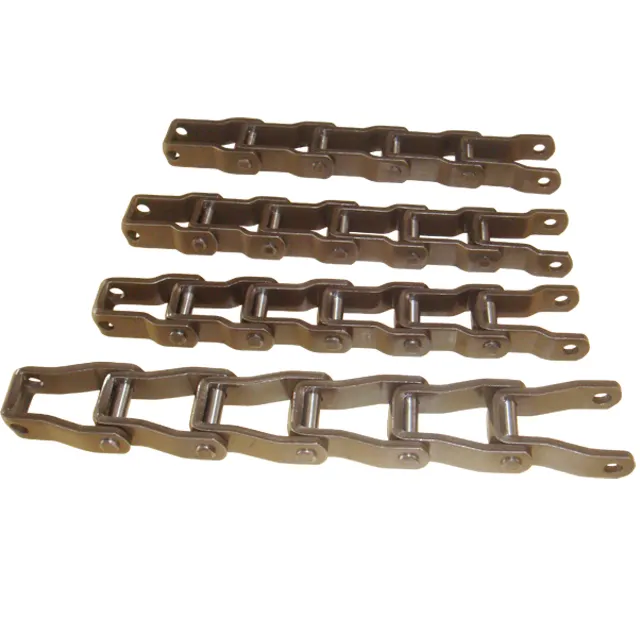Product Description
Steel Pintle Chain with Long Life China Supply (662, 667H)
Product Description
Chain Material: Alloy steel & Stainless steel
Chain Surface Treatment: Shot peening & Blackening & Bluing
Chain Size: 662, 667H, 667X, 667XH, 667K, 667J, 88K, 88C
| Product name | Steel Pintle Chain with Long Life China Supply (662, 667H) |
| Materials Available | 1. Stainless Steel: SS304, SS316, etc |
| 2. Alloy Steel: 45Mn, 42CrMo, 20CrMo, etc | |
| 3. OEM according to your request | |
| Surface Treatment | Shot peening, Blackening, Oxygenation, Polishing, Zinc-plated, Nickel-plated, Anodized, etc. |
| Characteristic | Fire Resistant, Oil Resistant, Heat Resistant |
| Design criterion | ISO DIN ANSI & Customer’s Drawing |
| Size | Customer’s Drawing & ISO standard |
| Package | Wooden Case / Container and pallet, or made-to-order |
| Certificate | ISO9001: 2008 |
| Advantage | First quality, Best service, Competitive price, Fast delivery |
| Delivery Time | 20 days for samples. 45 days for official order. |
Detailed Photos
View more products,please click here…
Company Profile
| Material: | Carbon Steel |
|---|---|
| Structure: | Conveyor Chain |
| Surface Treatment: | Oil Blooming |
| Chain Size: | 662, 667h |
| Feature: | Fire Resistant, Oil Resistant, Heat Resistant |
| Sample: | for Free |
| Samples: |
US$ 0/Meter
1 Meter(Min.Order) | |
|---|
| Customization: |
Available
| Customized Request |
|---|

Can pintle chains be used in overhead or inverted applications?
Yes, pintle chains can be used in both overhead and inverted applications, thanks to their unique design and construction. Here’s a more detailed explanation:
Overhead Applications:
In overhead applications, pintle chains are commonly used in conveyor systems where products or materials need to be transported overhead. The open-barrel design of pintle chains allows for excellent articulation and flexibility, enabling them to navigate the curves and sprockets typical in overhead conveyor layouts. The ability to handle shock loads and dynamic forces makes pintle chains suitable for lifting and moving heavy loads in such applications.
Inverted Applications:
In inverted applications, pintle chains are used in conveyor systems where the chain runs underneath the conveying surface. Inverted pintle chains are often utilized in industries like automotive manufacturing, where they can handle the weight of car bodies or other components as they move along the assembly line. The flexibility and load-bearing capacity of pintle chains make them well-suited for these demanding inverted conveyor setups.
Attachments and Load Handling:
In both overhead and inverted applications, the pintle chain’s attachments play a crucial role in securely holding and conveying the products or materials. The attachments are carefully designed to prevent products from falling or shifting during transport, ensuring safety and efficiency in these specialized applications.
Lubrication and Maintenance:
Proper lubrication is vital in overhead and inverted applications to ensure smooth articulation and reduce wear on the chain and its components. Regular maintenance and inspections are essential to identify signs of wear or damage, allowing for timely replacements and preserving the chain’s performance.
Conclusion:
Pintle chains can indeed be used in overhead and inverted applications, thanks to their flexible design, load-bearing capacity, and reliable attachments. Whether it’s lifting heavy loads overhead or moving products underneath the conveyor surface, pintle chains offer a versatile and robust solution for various industrial applications.

Can pintle chains be used in marine or underwater applications?
Yes, pintle chains can be used in marine or underwater applications, and they are well-suited for such environments due to their design and material options.
Pintle chains are known for their robust construction and ability to handle heavy loads, making them suitable for marine applications that require strength and durability. They are commonly used in marine equipment such as anchor chains, ship mooring systems, and marine propulsion systems.
The use of stainless steel in pintle chain manufacturing further enhances their suitability for marine and underwater applications. Stainless steel is highly resistant to corrosion from saltwater and other marine elements, ensuring that the chains maintain their performance and structural integrity even in harsh marine environments.
In marine applications, pintle chains may be exposed to seawater, humidity, and varying temperatures. Stainless steel pintle chains can withstand these conditions without succumbing to rust or degradation, providing reliable and efficient performance over extended periods.
Additionally, pintle chains are designed to handle side flexing, allowing them to navigate through sprockets and sheaves smoothly, which can be advantageous in certain marine applications where space is limited or complex routing is required.
Overall, pintle chains made from stainless steel are a preferred choice in marine and underwater applications due to their corrosion resistance, strength, and reliability, making them a valuable component in various marine equipment and systems.

How do pintle chains handle corrosion and chemical exposure?
Pintle chains’ ability to handle corrosion and chemical exposure depends on the material they are made of. Here’s a more detailed explanation:
Carbon Steel Pintle Chains:
Carbon steel pintle chains are the most basic and economical option. However, they are susceptible to corrosion when exposed to moisture, water, or certain chemicals. If used in corrosive environments, they may require regular maintenance, including proper lubrication and cleaning, to minimize the risk of corrosion.
Stainless Steel Pintle Chains:
Stainless steel pintle chains are highly resistant to corrosion and are well-suited for applications in harsh environments. Stainless steel contains chromium, which forms a protective oxide layer on the surface, preventing the chain from rusting or corroding when exposed to moisture, water, and many chemicals. They are particularly popular in food processing, pharmaceutical, and outdoor applications where hygiene and corrosion resistance are essential.
Alloy Steel Pintle Chains:
Alloy steel pintle chains are formulated with specific alloying elements to improve their resistance to corrosion and chemical exposure. They offer better corrosion resistance compared to standard carbon steel chains and are suitable for applications where stainless steel chains may not be necessary or cost-effective.
Plastic Pintle Chains:
Plastic pintle chains are non-metallic and inherently resistant to corrosion from moisture and chemicals. They are an excellent choice for applications where metal chains may not be suitable due to chemical compatibility concerns. Plastic pintle chains are commonly used in food handling, cleanroom environments, and other industries where corrosion and chemical resistance are critical.
Conclusion:
Pintle chains can handle corrosion and chemical exposure differently based on the material they are made of. Stainless steel and plastic pintle chains are the best options for applications where corrosion and chemical resistance are essential. For harsh environments, stainless steel chains offer excellent performance, while plastic chains are suitable for applications requiring non-metallic properties and chemical resistance. Proper chain selection and regular maintenance are essential to ensure optimal performance and longevity in corrosive and chemically exposed environments.


editor by CX 2023-07-28